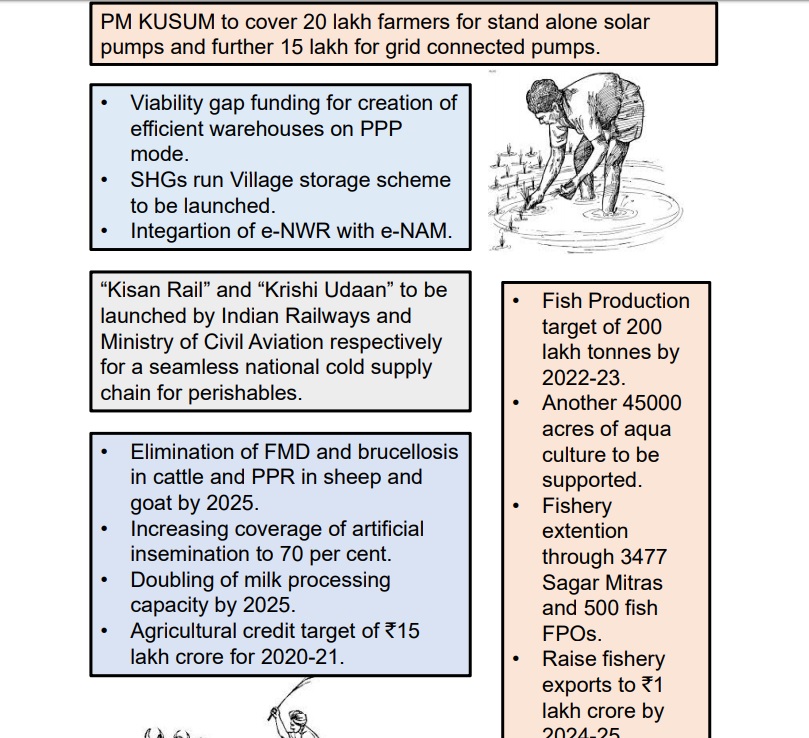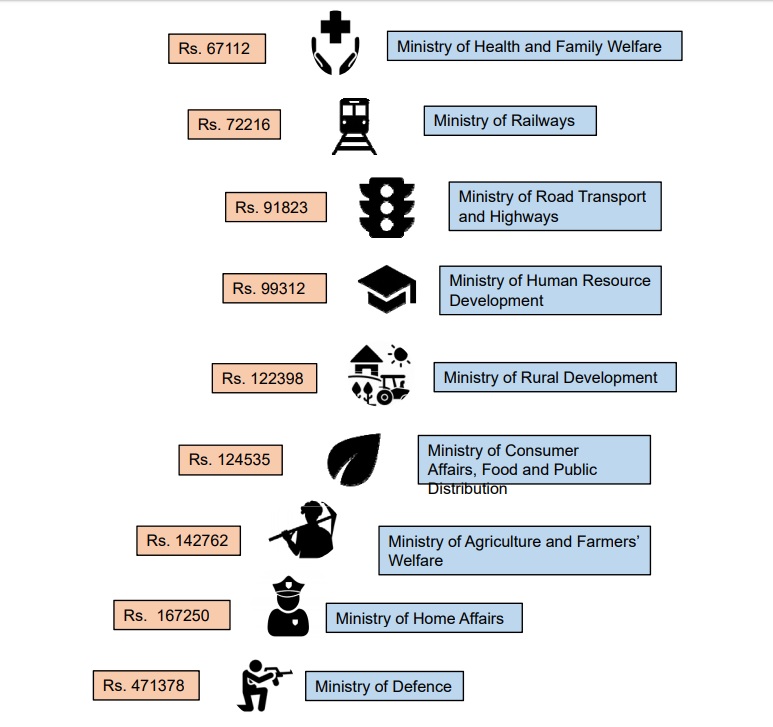FM takes out a 16-point action plan from her ‘bahi khata’ to revive the agriculture sector
Delivering the longest Union Budget speech -- 2 hours 37 minutes -- Finance Minister Nirmala Sitharaman laid down the 16-point action formula for the agriculture sector and said that the Narendra Modi government is committed to double farmers' income by 2022


Amid expectations that the Narendra Modi government will bring the Indian economy out of a slump by boosting growth, finance minister Nirmala Sitharaman tabled the Union Budget 2020-21 in the Lok Sabha on Saturday, February 1, 2020. This year’s Union Budget centred around three ideas — aspirational India, economic development, a caring society.
Agriculture has been under stress for years despite the successive governments committing to revive the sector that supports the livelihood of a major chunk of India’s population. The Budget has allocated ₹2.83 lakh crore for irrigation and agriculture sector for the next fiscal. The government has pegged the agricultural credit target at ₹15 lakh crore for fiscal 2020-21, Finance Minister Nirmala Sitharaman said on Saturday.
With hopes of addressing the shortcomings of the past, Union Finance Minister Nirmala Sitharaman proposed a 16-point formula in Union Budget 2020 to revive agriculture and link it with allied sector better than before to double the income of farmers in next two years.

(1) The Central government has encouraged state governments to implement the Model Agricultural Land Leasing Act, 2016, Model Agricultural Produce and Livestock Marketing (Promotion and Facilitation) Act, 2017, and Model Agricultural Produce and Livestock Contract Farming and Services (Promotion and Facilitation) Act, 2018
(2) The government has proposed comprehensive measures for one hundred water-stressed districts.
(3) The government proposes to extend the PM-KUSUM scheme to provide 20 lakh farmers for setting up stand-alone solar pumps. It will also help another 15 lakh farmers solarise their grid-connected pump sets. In addition, a scheme to enable farmers to set up solar power generation capacity on their fallow/barren lands and to sell it to the grid would be operationalized. However, the experts and environmentalists have said the scheme is not environment friendly.
(4) The government will encourage balanced use of all kinds of fertilizers including the traditional organic and other innovative fertilizers
(5) India has an estimated capacity of 162 million MT of agri-warehousing, cold storage, reefer van facilities etc. NABARD will undertake an exercise to map and geo-tag them. The government proposes creating warehousing, in line with Warehouse Development and Regulatory Authority (WDRA) norms. The government will provide Viability Gap Funding for setting up such efficient warehouses at the block/taluk level
(6) A Village Storage scheme is proposed to be run by the self-help groups. This will provide farmers a good holding capacity and reduce their logistics cost. Women, SHGs shall regain their position as “Dhaanya Lakshmi”.
(7) To build a seamless national cold supply chain for perishables, inclusive of milk, meat and fish, the Indian Railways will set up a “Kisan Rail” – through PPP arrangements. There shall be refrigerated coaches in Express and Freight trains as well
(8) The government proposes to launch Krishi Udaan on international and national routes. This will immensely help improve value realization especially in North-East and tribal districts.

(9) Horticulture sector with its current produce of 311 MT exceeds the production of food grains. For better marketing and export, the government propose to support supporting states which will focus on “one product one district”
(10) The government proposes to expand integrated farming systems in rainfed areas. Multi-tier cropping, bee-keeping, solar pumps, solar energy production in non-cropping season will be added. Zero-Budget Natural Farming (mentioned in July 2019 budget) shall also be included
(11) The government proposes to integrate financing on Negotiable Warehousing Receipts (e-NWR), that have crossed more than Rs 6,000 crore with e-NAM
(12) The government proposes to expand the NABARD re-finance scheme. The agriculture credit target for the year 2020-21 has been set at Rs 15 lakh crore. All eligible beneficiaries of PM-KISAN will be covered under the KCC scheme.
(13) The said it’s committed to eliminating Foot and Mouth disease, brucellosis in cattle and also peste des petits ruminants (PPR) in sheep and goat by 2025. It proposes to extend the coverage of artificial insemination from the present 30% to 70%. It proposes to double milk processing capacity from 53.5 million MT to 108 million MT by 2025
(14) The government proposes to put in place a framework for development, management and conservation of marine fishery resources
(15) The government proposes to raise fish production to 200 lakh tonnes by 2022-23. It aims to involve youth in fishery extension through 3,477 Sagar Mitras and 500 Fish Farmer Producer Organisations
(16) Under DeenDayal Antyodaya Yojana for alleviation of poverty, 58 lakh SHGs have been mobilised. The government shall further expand on SHGs

